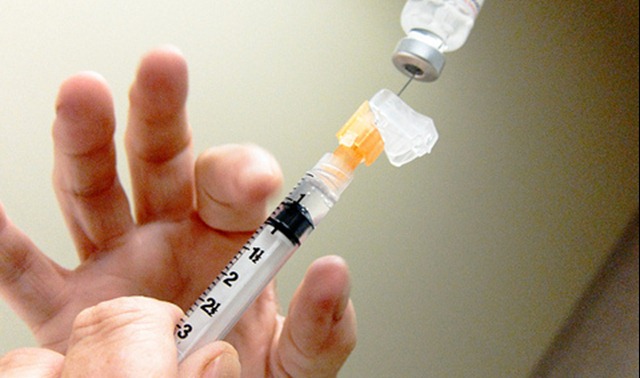The CDC has received a number of reports of severe respiratory illness among young and middle-aged adults, many of whom were infected with influenza A (H1N1) pdm09 (pH1N1) virus. Multiple pH1N1-associated hospitalizations, including many requiring intensive care unit (ICU) admission, and some fatalities have been reported. While it is not possible to predict which influenza viruses will predominate during the entire 2013-14 influenza season, pH1N1 has been the predominant circulating virus so far. For the 2013-14 season, if pH1N1 virus continues to circulate widely, illness that disproportionately affects young and middle-aged adults may occur. In the 2012-13 influenza season, CDC estimates that there were approximately 380,000 influenza-associated hospitalizations. Although influenza activity nationally is currently at low levels, some areas of the United States are already experiencing high activity, and influenza activity is expected to increase during the next few weeks. The spectrum of illness observed thus far in the 2013-14 season has ranged from mild to severe and is consistent with that of other influenza seasons. While CDC has not detected any significant changes in pH1N1 viruses that would suggest increased virulence or transmissibility, the agency is continuing to monitor for antigenic and genetic changes in circulating viruses. CDC recommends annual influenza vaccination for everyone 6 months and older. Anyone who has not yet been vaccinated this season should get an influenza vaccine now. While annual vaccination is the best tool for prevention of influenza and its complications, treatment with antiviral drugs (oral oseltamivir and inhaled zanamivir) is an important second line of defense for those who become ill to reduce morbidity and mortality. Antiviral treatment is recommended as early as possible for any patient with confirmed or suspected influenza who is hospitalized; has severe, complicated, or progressive illness; or is at higher risk for influenza complications.
As if the fiery rash and painful blisters of shingles were not punishment enough, the average patient who suffers a resurgence of the dormant chickenpox virus known as herpes zoster — or shingles — has a higher risk of heart attack or mild stroke two decades or more after the blisters and rash recede, says a new study. Writing in the journal Neurology, the British authors of the latest report say the findings strengthen the suspicion that once unleashed as shingles, the herpes zoster virus may plant seeds of destruction in some of the body’s blood vessels which could take years to wreak havoc. That would be a particularly sneaky trick for a virus already known for lying in wait for years to attack. The findings raise the possibility that getting the shingles vaccine could for many head off a slide toward cardiovascular disease. But other studies will be needed to test that proposition. In the meantime, they suggested, the shingles vaccine could be offered to any patients that are at risk of cardiovascular disease in a bid to reduce their risk factors. And patients who’ve had shingles before age 40 might be treated more aggressively to drive down heart attack and stroke risk, and urged to live a heart-healthy lifestyle.
Source: Los Angeles Times
Older men who spend a lot of time sitting around are more likely to face heart failure down the road, a new study shows. The research included more than 82,000 men between the ages of 45 and 69. Those who spent more time being sedentary outside of work hours, even if they exercised, had a higher risk for heart failure. “Men with low levels of physical activity were 52 percent more likely to develop heart failure than men with higher levels of physical activity,” said study author Deborah Rohm Young, a senior scientist at Kaiser Permanente in Pasadena, Calif. Young said those who spent at least five hours per day sitting were 34 percent more likely to develop heart failure than those who spent less than two hours a day sitting. The scientists used data from a large study called the California Men’s Health Study. None of the men had heart failure at the start of the study. “We looked at baseline information on a questionnaire about physical activity and sitting time outside of work,” said Young, who noted that the men were followed for up to a decade. Their exercise levels were calculated in a way that tallied how much energy the body uses. The researchers also tracked how many hours a day the men were sedentary. “Those who had low physical activity — who sat a lot and got little exercise — were more than twice as likely to have heart failure compared to those who were active and had not very much sitting time outside of work,” Young explained. Heart failure is the inability of the heart muscle to effectively pump blood throughout the body, said Young. It affects 5.7 million Americans — mostly older people. Approximately 20 percent of adults will be diagnosed with it during their lifetime, according to the American Heart Association. “It affects a lot of people. Of those who have heart failure, about half will die within five years of being diagnosed,” Young said, noting that transplants are rare and most with the condition manage it through medication. “But it is associated with a reduced quality of life.” Young said that even when she and her colleagues looked at people who developed heart disease or high blood pressure during the study, they found that being more active was still good. “It was more likely to protect against heart failure for those who had those conditions.” For those with heart issues who want to increase their exercise, it’s not too late, she said, although, “obviously they have to get a clearance from their physicians before changing their physical activity.” The take-home message is simple, Young said: Sit less, move more. “It doesn’t even require joining a gym,” she said. “Walking is the best exercise for the majority of people. Brisk walking. Thirty minutes a day is wonderful.”
Source: HealthDay


